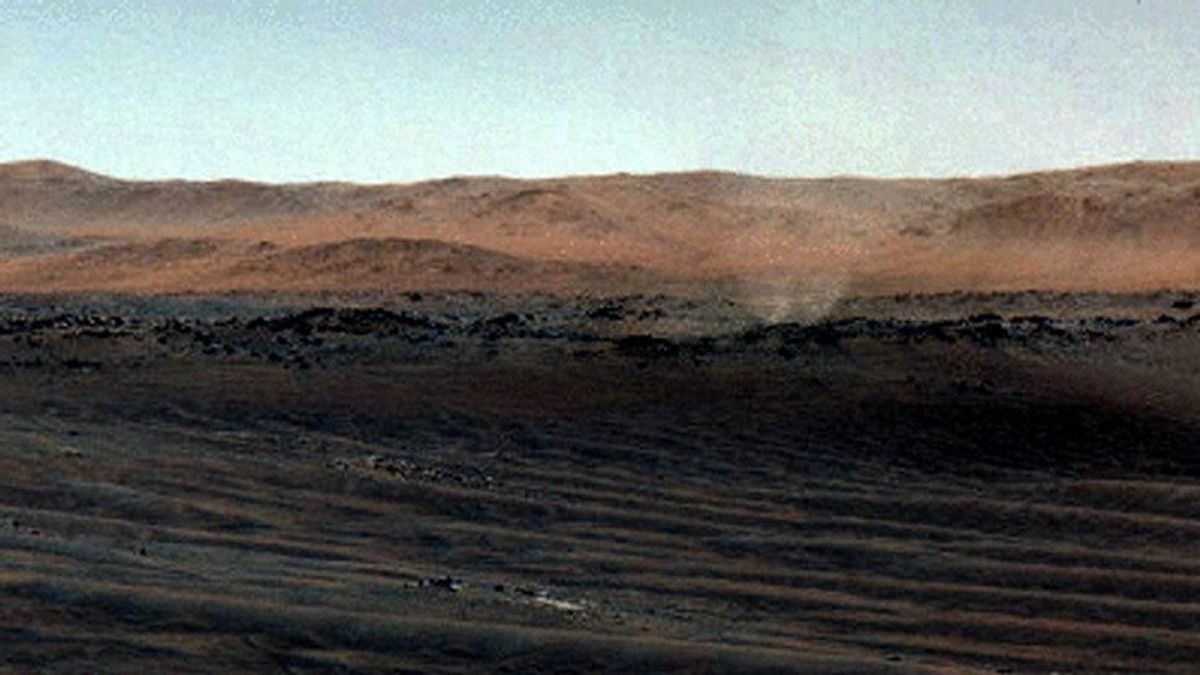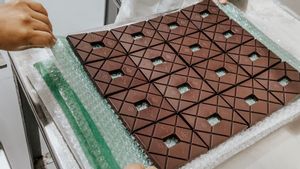JAKARTA - While exploring ancient lakes on Mars, NASA's Perseverance rover robot accidentally recorded the planet's first sound of dust devils using its microphone. The footage could be key to understanding how the atmosphere and weather there are.
The microphone embedded in the SuperCam Perseverance instrument recorded the Martian dust devil on September 27, 2021 with a wind speed of 25 mph. Dust devils, or dust cyclones, are common on Mars, and are part of the weather pattern on the Red Planet.
Scientists have long had evidence of the existence of a dust demon on Mars, as has been photographed for years. However, this 11-second audio clip is the first time humans have heard what his voice is like.
Perseverance has detected 90 dust demons passing above its body, but this is the first time the rover has been lucky enough to turn on its microphone at the time.
"During the 11-second clip captured by the microphone, there were two periods of low-frequency wind as the front and rear walls of the dust devil passed through the rover," said lead study author Dr. Naomi path, a researcher at the University of Toulouse's Higher. The Institute of Aeronautics and Space.
In the audio, there are cracks and descises that the researchers say are dust grains that hit Perseverance.
Researchers were able to calculate particles in the dust devil when it hit a rover robot, leading to a completely new type of measurement on the red planet.
"This is the first time an instrument has been able to measure dust flying on Mars," saidTEN.
Other images and data sent back by Perseverance also confirmed what happened. When the researchers unified all the elements collected by the rover, they determined the dust devil was over 118 meters high and stretched 25 meters, about 10 times larger than the rover's own robot.
"Even though this sounds like a very big windy wind, it's an average size for the Martian dust devil," saidTEN.
Launching CNN International, Thursday, December 15, researchers were shocked to find dust piling up in the dust devil, not just being carried into the outer wall, perhaps because the dust devil is still in the process of forming as it moves above Perseverance.
This information is useful for astronauts in the future so they don't have to worry about strong winds blowing antennas or habitats.
In addition, this also provides substantial evidence of the old hypothesis that the Martian sepoi-sepoi wind is responsible for blowing sand from the solar panels of other explorers, helping them survive longer than originally planned.
The dust devil has a reputation as a rescuer as well as a dangerous one on Mars. This was experienced by the InSight lander robot who has spent four years studying the earthquake and phenomenon on the Red Planet.
The layer of dust converges on InSight's solar panels and prevents it from charging enough power to operate its instruments. Until now there has been no way to save it.
The reason is, dust demons often appear in Jezero Crater, where Perseverance landed, but they don't seem to be in the InSight area, namely on the elysium PLANt and researchers aren't sure why.
In the case of InSight, dust has deposited from the atmosphere into the solar panels. However, because no cyclone is capable of lifting dust in the InSight region, the winds are unable to clear the solar panels, "said the researchers.
Perseverance collected its first Martian rock samples from the planet's surface in September 2021, after landing on the planet's surface in February.
Explorers will spend the coming years looking for signs of ancient microbial life on missions that will bring samples back to Earth and prepare roads for future human visitors.
To hear the sound of the Martian dust devil, you can visit NASA's official website. Here!
The English, Chinese, Japanese, Arabic, and French versions are automatically generated by the AI. So there may still be inaccuracies in translating, please always see Indonesian as our main language. (system supported by DigitalSiber.id)













